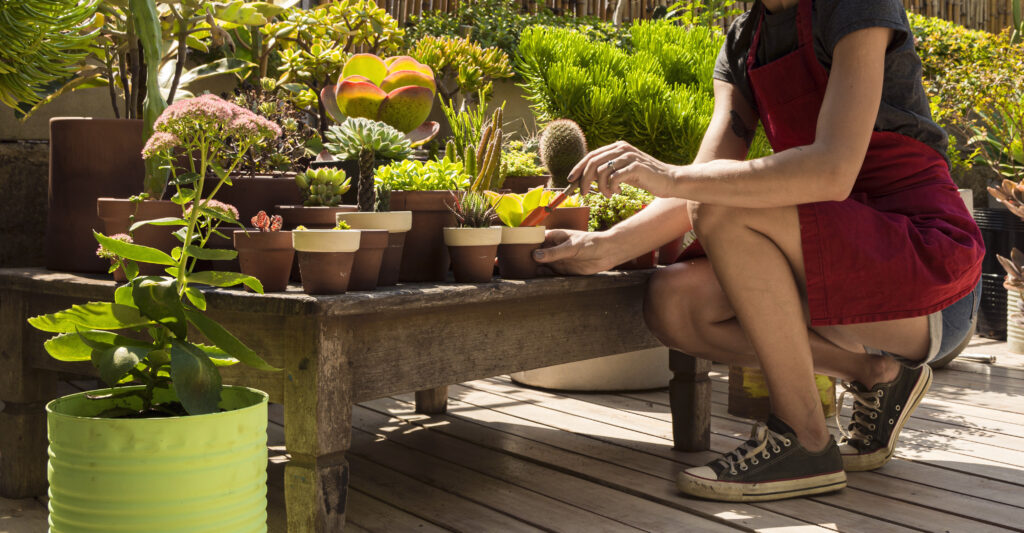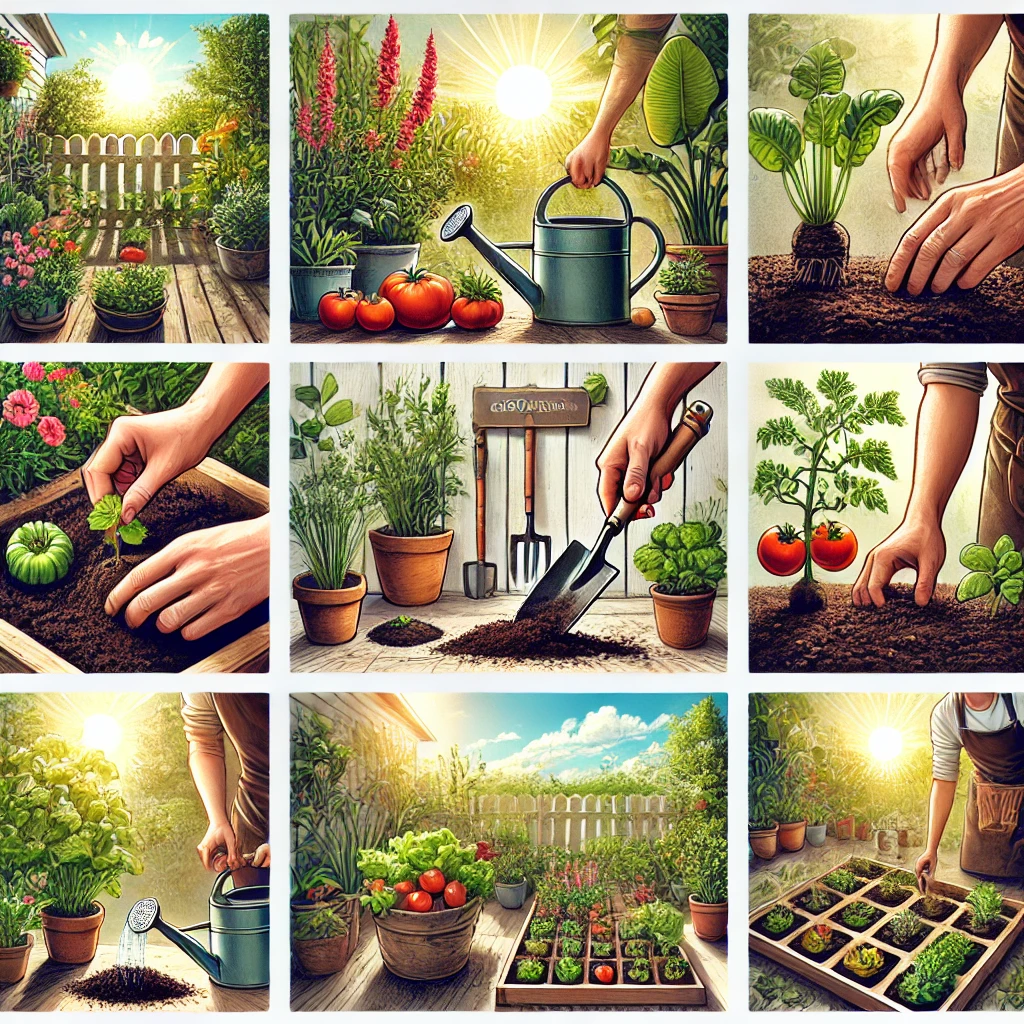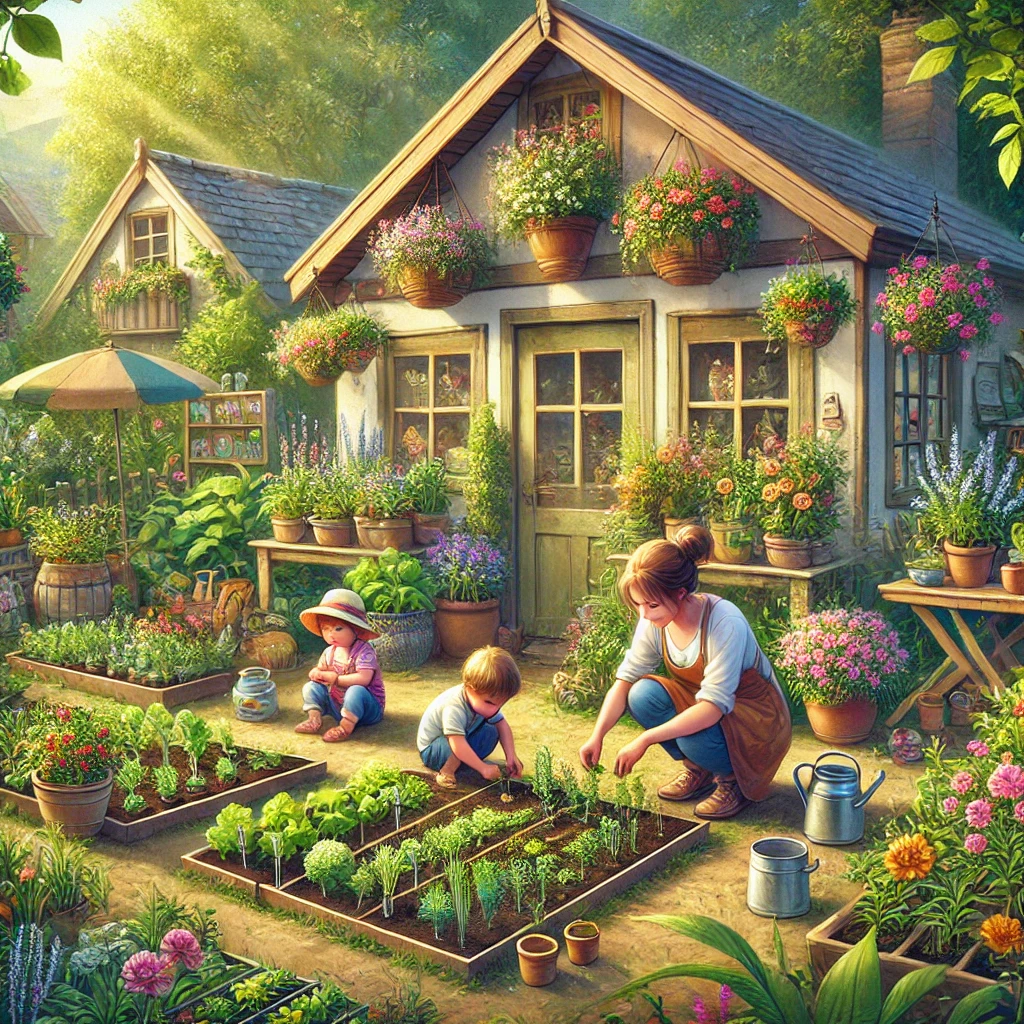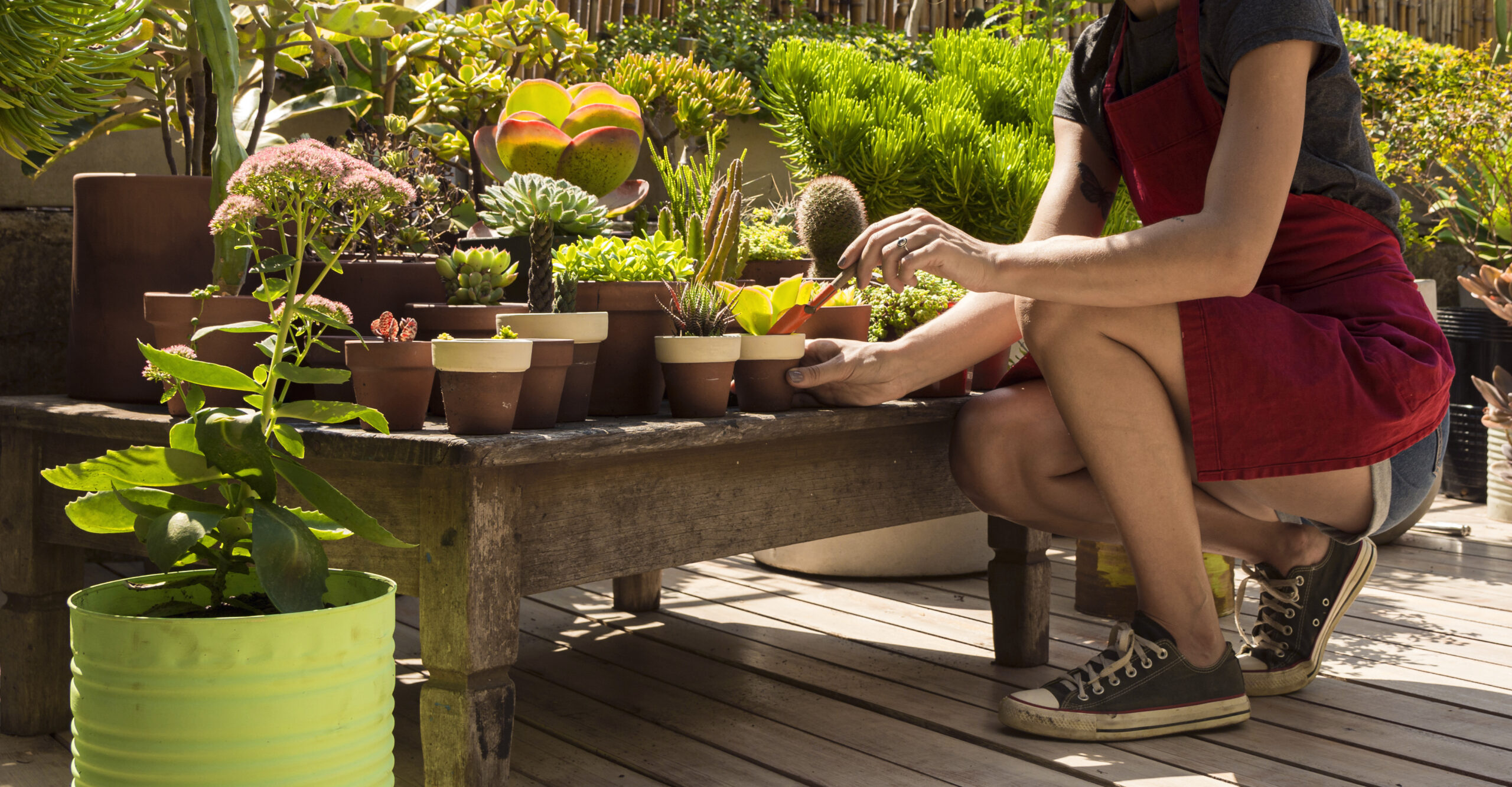Starting a home garden can be a fulfilling way to connect with nature, reduce grocery bills, and beautify your outdoor space. But for beginners, it might feel overwhelming. How do you choose what to plant? Where should you place your garden, and what tools will you need? This guide breaks down each step to make creating a home garden enjoyable and manageable.
Step 1: Choose the Right Location for Your Garden

Selecting the right spot for your garden is crucial. Here’s what to keep in mind:
- Sunlight: Most plants need 6-8 hours of direct sunlight daily. Choose an area with plenty of natural light to support healthy plant growth.
- Accessibility: Ensure your garden is near a water source, like a hose, so you can easily water it. Gardens that are easy to reach encourage regular care and maintenance.
- Protection: Shield your garden from strong winds, which can harm young plants. Placing it near a wall or using a small wind barrier can help.
- Space: Make sure there’s enough room for your plants to grow. If space is limited, consider a container garden on your balcony or patio.
Step 2: Decide What to Grow
The best plants for beginners are hardy, easy to care for, and suited to your climate. Here are a few ideas to help you get started:
Vegetables
- Lettuce: Fast-growing, lettuce can be harvested within a few weeks.
- Tomatoes: A garden favorite, tomatoes require sunlight and regular watering but offer a bountiful harvest.
- Radishes and carrots: These root vegetables are easy to grow and ideal for beginners.
Herbs
- Basil: Perfect for sunny spots, basil is great for cooking and attracts pollinators.
- Parsley and mint: These herbs are low-maintenance and can be grown in pots if you have limited space.
Flowers
- Marigolds: Hardy and beautiful, marigolds repel pests, making them great companion plants for vegetables.
- Sunflowers: Easy to grow and cheerful, sunflowers bring height and color to your garden.
Step 3: Prepare the Soil
Healthy soil is essential for a thriving garden. Here’s a step-by-step on preparing your garden bed:
- Clear the Area: Remove weeds, rocks, and any debris to start with a clean space.
- Loosen the Soil: Use a garden fork or tiller to loosen compacted soil. This helps with drainage and root growth.
- Add Organic Matter: Enrich the soil by mixing in compost or aged manure, which provides essential nutrients. Compost improves soil texture, retains moisture, and promotes microbial activity, all crucial for plant health.
- Test Soil pH: Most vegetables prefer slightly acidic to neutral soil (pH 6-7). Testing kits are inexpensive and available at most garden centers.
Step 4: Plan and Organize Your Garden Layout
A well-planned layout can maximize space and make maintenance easier. Here are a few layout tips:
- Companion Planting: Certain plants, when grown together, can improve growth and repel pests. For example, basil planted near tomatoes enhances flavor and deters insects.
- Spacing: Check seed packets for spacing guidelines. Overcrowded plants compete for nutrients, sunlight, and water, resulting in poor growth.
- Height Consideration: Plant taller plants, like sunflowers, toward the back of the garden or on the north side to avoid shading smaller plants.
Step 5: Start Planting

Once your layout is ready, it’s time to plant! Here are tips for different types of plants:
- Seeds: Follow packet instructions on depth and spacing. Some seeds need to be started indoors (like tomatoes), while others, like radishes, can be sown directly into the soil.
- Seedlings: If you buy young plants from a nursery, transplant them carefully. Dig a hole twice as wide as the root ball, place the plant in, and fill with soil.
- Watering: After planting, water gently to avoid disturbing the soil. Keep the soil moist but not waterlogged as the plants establish.
Step 6: Watering and Maintenance
Regular care keeps your garden healthy. Here’s what to focus on:
- Watering: Most plants need about an inch of water per week. Water in the early morning to reduce evaporation and help plants stay hydrated throughout the day. Drip irrigation systems or soaker hoses are excellent for maintaining consistent moisture.
- Weeding: Weeds compete with plants for nutrients and water. Remove weeds weekly to keep your garden healthy.
- Mulching: Applying mulch around plants helps retain soil moisture, reduce weeds, and regulate soil temperature. Organic mulch, such as straw, leaves, or wood chips, is ideal.
Step 7: Pest Control
Pests are a common gardening challenge, but there are natural ways to manage them:
- Handpicking: For small gardens, handpicking pests like caterpillars can be effective.
- Companion Planting: Some plants, like marigolds, deter pests naturally.
- Natural Remedies: Use insecticidal soap or neem oil to treat infestations without harming beneficial insects like bees and ladybugs.
Step 8: Harvesting and Enjoying Your Garden

As your plants mature, enjoy the rewards by harvesting them at peak ripeness. Here are a few tips for harvesting common crops:
- Leafy Greens: Harvest leaves from the outer edge as needed, allowing the plant to continue growing.
- Root Vegetables: Check the top of the vegetable near the soil surface to see if it’s ready. Gently pull or dig out.
- Herbs: Regular harvesting encourages growth. Snip off a few inches from the top to prevent flowering and promote bushier plants.
Essential Tools for Beginners
Investing in quality tools makes gardening easier. Here are the essentials:
- Garden Fork: For loosening soil and aeration.
- Hand Trowel: Useful for planting, transplanting, and weeding.
- Pruners: Essential for trimming plants and removing dead growth.
- Watering Can or Hose: A watering can is handy for container plants, while a hose with a spray attachment is convenient for larger gardens.
- Gloves: Protects your hands from thorns, splinters, and dirt.

Benefits of Home Gardening
Gardening provides numerous benefits beyond just fresh produce. Here are a few reasons to embrace it:
- Health Benefits: Gardening is great exercise, reducing stress, and offering a sense of achievement.
- Sustainability: Growing your food reduces dependency on store-bought produce, cutting down on carbon emissions.
- Cost Savings: Once established, a home garden can significantly lower grocery bills, especially for herbs and vegetables.
- Community Building: Gardening fosters connections with neighbors, who might be eager to share tips, seeds, or harvests.
With these tips, you’re well on your way to starting a successful home garden. Remember, gardening is a learning process, and it’s okay to experiment and make mistakes. Enjoy the journey of growing your own food and watching your plants thrive!


1 thought on “How to Start a Home Garden for Beginners”